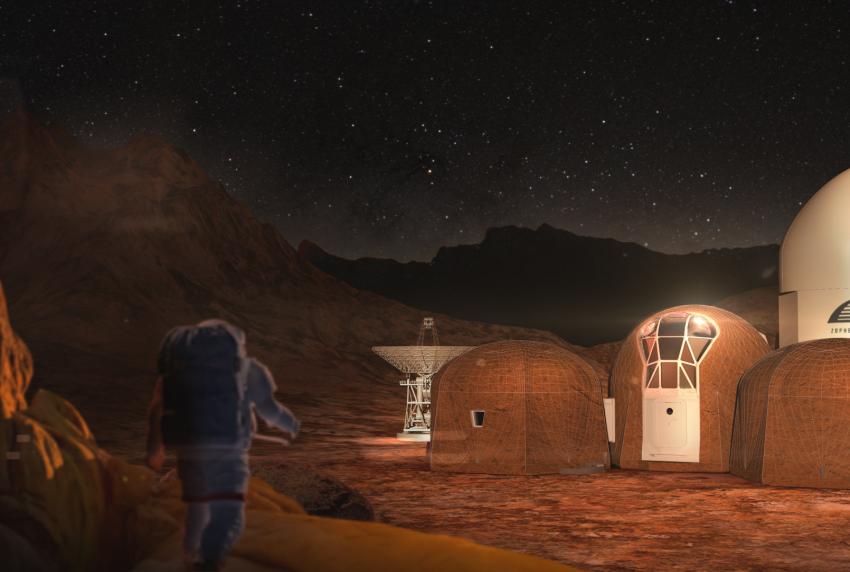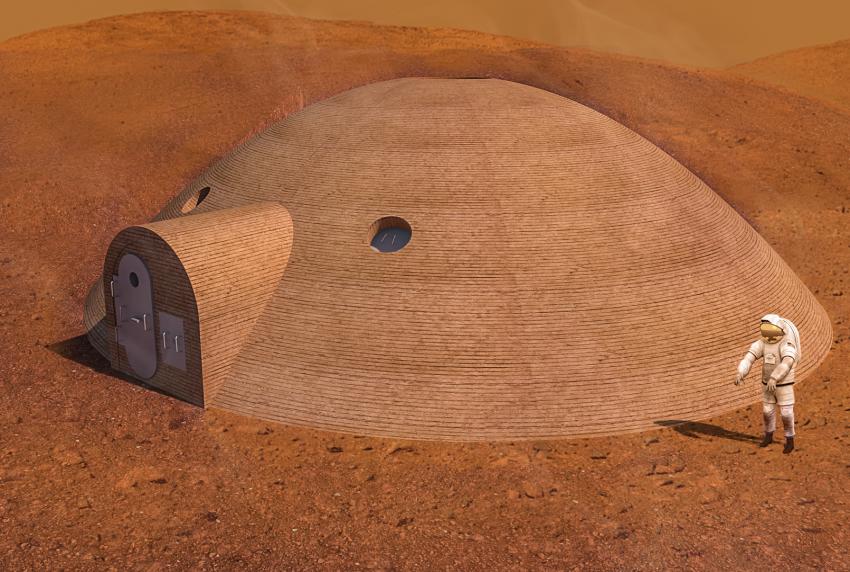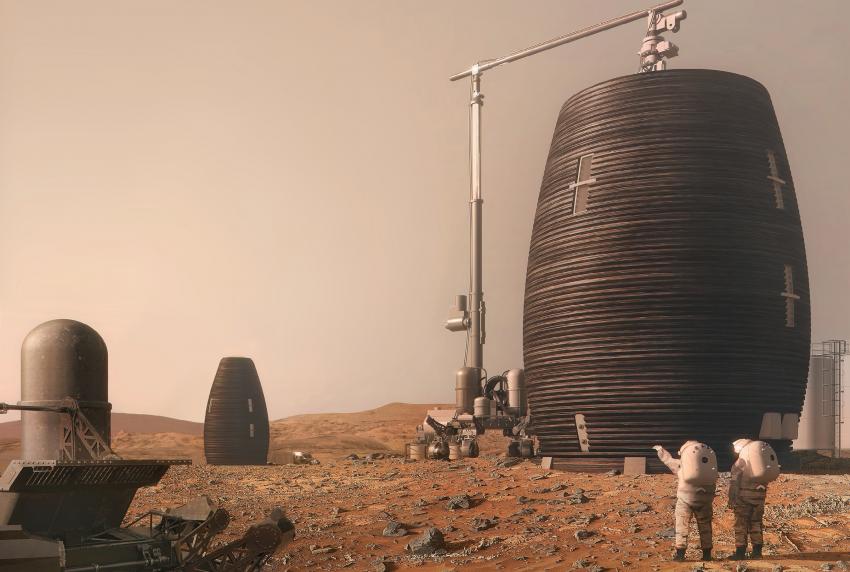Various
Mars
United States
Top five entrants announced in latest phase of 3-D Printed Habitat Competition
The notion of a base on Mars has moved a small step closer, with the announcement of the top five teams selected to share a $100,000 prize in the latest stage of NASA’s 3D-Printed Habitat Centennial Challenge. Launched in partnership with Bradley University, the Challenge aims to further the development of shelters for future space missions on other planets and moons. Given the difficulty of transporting materials across space, the brief pushed inventors to develop technologies capable of manufacturing a habitat using indigenous resources.
Entrants created digital representations of the physical and functional characteristics of a house on Mars with specialised software tools. They were assigned a share of the prize money as follows:
Team Zopherus of Rogers, Arkansas - $20,957.95
AI. SpaceFactory of New York - $20,957.24
Kahn-Yates of Jackson, Mississippi - $20,622.74
SEArch+/Apis Cor of New York - $19,580.97
Northwestern University of Evanston, Illinois - $17,881.10
The jury considered not only the structural integrity of these extra-terrestrial buildings, but also the practicality for the inhabitants trying to survive in an unfamiliar environment. Jury Monsi Roman, program manager for NASA’s Centennial Challenges, stated: “We are thrilled to see the success of this diverse group of teams that have approached this competition in their own unique styles. They are not just designing structures, they are designing habitats that will allow our space explorers to live and work on other planets. We are excited to see their designs come to life as the competition moves forward.”
The competition, which began in 2014, is now in its third stage. The first two phases focussed on architectural design and material technologies, while the current phase has five levels based around virtual designs and construction. The construction levels challenge the teams to autonomously 3D-print elements of the shelter, culminating in a one-third-scale printed habitat with a $2 million prize purse. “We are encouraging a wide range of people to come up with innovative designs for how they envision a habitat on Mars,” said Lex Akers, dean of the Caterpillar College of Engineering and Technology at Bradley University. “The virtual levels allow teams from high schools, universities and businesses that might not have access to large 3D printers to still be a part of the competition because they can team up with those who do have access to such machinery for the final level of the competition.”
Lucy Nordberg
TenderStream Head of Research
This competition was first published by TenderStream here
Start your free trial here or email our team directly at customerservices@tenderstream.com






